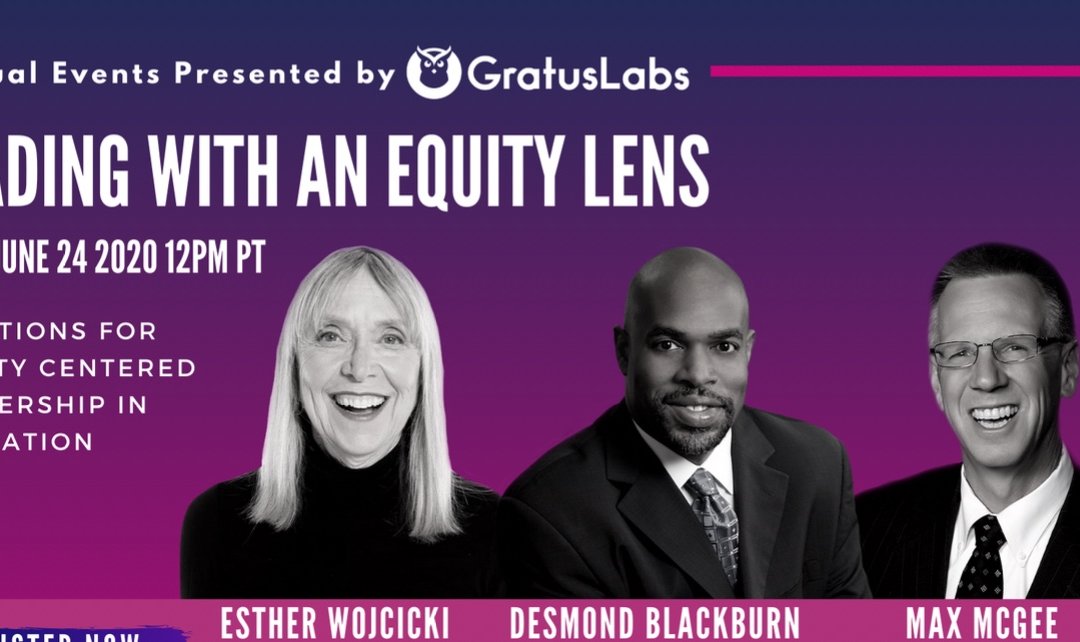As educational leaders, be you teachers or administrators, students or citizens, you know that what you do matters far more than what you say, and today is that call to action. We are outraged by the murder of George Floyd, Breonna Taylor, Ahmaud Arbery, and a long list of other martyrs, but equally outraged by the fact that our historically underrepresented students and families are denied equitable opportunities and access and not just because of zip codes.
As leaders we have to do something and persist in our efforts despite opposition, ignorance, or apathy. We must lead with our equity lens to inspire and invigorate board members, teachers, students, parents, the community, and beyond.
So why do we call this an equity lens? The equity lens makes those who are invisible visible
When I became superintendent of the Palo Alto Unified School District in California, one of the wealthiest districts in the country, however we also had 600 students from East Palo Alto, one of the poorest districts in the country who were there on a volunteer transfer program. I was shocked that the administrators, board members, many of the teachers, had no idea of the size of the achievement gap. But, even worse, had no idea of the disproportionality of students of color in special ed, and in eighth grade algebra, or in BC calculus, where we had one student, one Black student, taking the BC Calc test.
These are so many capable students. Why are these students of color invisible? Why are they unable to breathe? Well, as my tech guy reminds me when I have a computer problem, he says the first thing you do, Max, is look in the mirror. I think as leaders that’s what we have to do.
This equity lens helps us look in the mirror because too often these implicit biases keep our students and unintentionally steer decisions that send us off-course.
An equity lens also changes the focus from number to narrative. Too often we focus just on numbers, average test scores, achievement gap scores, when we should first focus on the narrative. It’s about numbers and narrative, and narrative comes first, the students’ stories, their lived experiences, their thoughts and feelings. When we focus on numbers, we’re operating from a deficit perspective. But when we seek first to understand, in the words of Steven Covey, when we get to know these students, when we sit with them, when we shadow them for a day and hear their stories, we understand them, and we understand the narrative, and we see all the assets that they really bring to our schools each and every day.
An equity lens enhances the clarity of purposes. Why are we in education? Why did we choose leadership? To fully develop talent and potential, a potential that exceed expectations and really has no ceilings. As President of the Illinois Math and Science Academy, I was honored to work with students of color from all over, and believe me we had our fights with the admissions committee. But when we based our decisions on students’ assets, kids from East St. Louis, inner city Chicago, there was not ceiling on what they could do. And a big shout out right now to one of our newest MDs, Dr. Bernice Fokum. If you don’t follow her blog, you certainly should.
And finally, an equity lens enables us to heal and transform that which needs to be healed and transformed. As State Superintendent, working with my wife’s kids in North Lawndale and East Aurora, I knew there were so many were college bound but never had opportunity to access or even to take an ACT or SAT. So back in 2000 we put it in the Illinois state test. Since then tens of thousands of students have had the opportunities. So an equity lens will help us realize what needs to be healed and transformed.
In the words of the Axios newsletter of June 10, 2020, “There’s no market for half-assed diversity and inclusion efforts.” So what we have to do is ACT. It means to walk the talk. It means to truly take time to listen to and understand our students and our staff, to take the time to make sure that we have teachers who have the mindset to teach our students of color and to assure that they reach not only what we think is their potential, but go beyond it.
As CEOs and education leaders, we often duck uncomfortable conversations or find that something else will come up. We tend to be cautious. But we have to be out there in this business, and it is time now to speak out, and speak authentically, and speak with force and decisiveness and action. If we can’t speak, we’ve got to start listening. I don’t mean just calling a group together here or there, but immersing ourselves in the communities, in the classrooms, side by side with our teachers. Because, as Axios noted, “The next wave of great leaders will adapt our styles and organizations to harness the passion for equity, for opportunity, for access. The weaker ones will be paralyzed and pummeled by it.”

